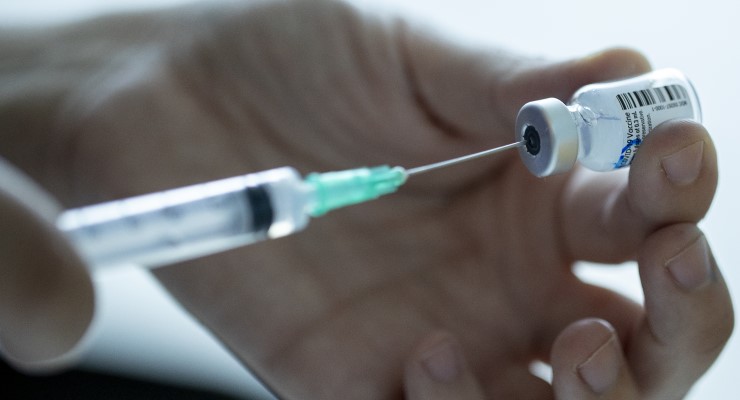
Doses of the AstraZeneca and Pfizer-BioNTech vaccines are being doled out more slowly than expected, with disruptions on both sides. The ever-changing time frames have caused stoushes between the European Union and the UK, and Italy is threatening to sue.
But Australian officials remain optimistic that our vaccines will be delivered on time, although the timeline has changed many times. Officials have also refrained from providing clear details on what the rollout will look like after March.
Here’s what we know so far.
What are the problems?
AstraZeneca unexpectedly cut its initial deliveries of the vaccine to the EU by 60% or 1 million doses, and Pfizer warned shipments would be delayed by a week because of processing plant upgrades.
The delays have caused a standoff between the two blocs: the EU, which manufactures Pfizer’s vaccine in Brussels, Belgium, has threatened to impose export controls on the vaccine as it did in 2020 with personal protective equipment. Italy has threatened to sue the firm over the delays.
AstraZeneca, which manufactures its vaccine largely in Oxfordshire and Staffordshire in the UK but also in Germany and Belgium has said initial volumes would be lower because of reduced yields at a manufacturing site in the EU supply chain.
What’s Australia’s rollout look like?
Australia’s timeline has been flexible, to say the least. In the first week of January, Prime Minister Scott Morrison announced the rollout would be brought forward to by two weeks to early March, before announcing two days later Australia could expect the rollout to begin in mid to late February.
“There will be swings and roundabouts on this process,” Morrison said on Monday. “You can expect that and what you can also expect for us to explain those as they occur.”
Now it seems there’s another delay of about two weeks, with late February more likely than mid February because of the international delays.
We also have been affected by AstraZeneca’s delays. Australia was supposed to get 1.9 million doses in January and another 1.9 million in February, but the January number has been cut to 1.2 million. It’s not clear when the remaining January doses will arrive.
In August, Australia made a deal to manufacture AstraZeneca’s vaccine onshore at Melbourne laboratory CSL. Manufacturing began in October and 50 million doses will be manufactured and distributed across the country.

Australia’s timeline
- January 25: Pfizer vaccine approved by the Therapeutic Goods Administration (TGA)
- Early to mid February: Pfizer vaccine expected to arrive in Australia. The company requires two weeks to deliver the vaccine after a government has approved it to organise delivery in -70 degrees storage, as required for mRNA vaccines
- Mid to late February: Australia will finish batch testing the first Pfizer doses
- Late February: vaccination of Phase 1a high priority populations expected with Pfizer’s vaccine. These groups include quarantine and border workers, frontline health officials, aged and disability care workers, and aged and disability care residents, and 80,000 vaccines are expected to be administered a week
- End of February: AstraZeneca’s vaccine expected to be approved
- Start of March: international imports of AstraZeneca’s vaccines expected to start being administered to phase 1a groups
- Mid to late March: phase 1a groups expected to receive their second and final dose of Pfizer’s vaccine
- Early April: 4 million Australians expected to have been vaccinated
- April-June: locally manufactured doses of AstraZeneca’s vaccine expected to be administered
- October: all Australians are expected to be fully vaccinated. This goal has remained the same since December.
We still don’t know when other population groups — labelled as phases 1b, 2a, 2b and 3 — will begin to be vaccinated. It’s also not clear when the remaining international imports of AstraZeneca’s doses will arrive.








Crikey is committed to hosting lively discussions. Help us keep the conversation useful, interesting and welcoming. We aim to publish comments quickly in the interest of promoting robust conversation, but we’re a small team and we deploy filters to protect against legal risk. Occasionally your comment may be held up while we review, but we’re working as fast as we can to keep the conversation rolling.
The Crikey comment section is members-only content. Please subscribe to leave a comment.
The Crikey comment section is members-only content. Please login to leave a comment.